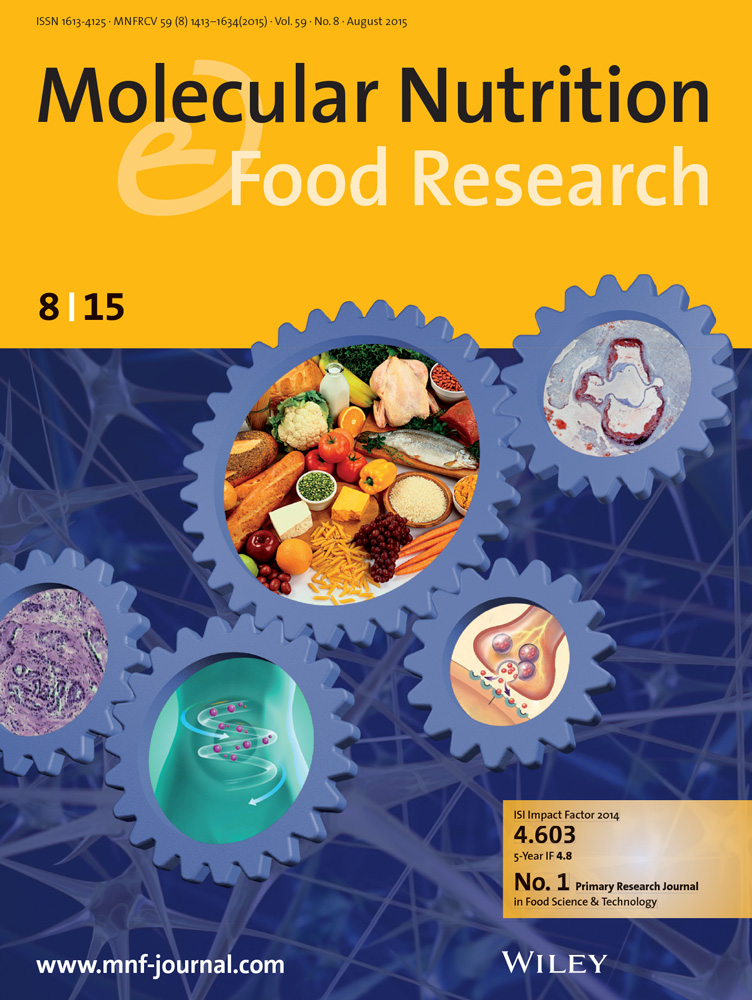Milk Exosomes From Gestational Diabetes Mellitus Parturients Demonstrate Weaker Ability to Promote Intestinal Development in Offspring
IF 4.5
2区 农林科学
Q1 FOOD SCIENCE & TECHNOLOGY
引用次数: 0
Abstract
This study aims to investigate whether human milk exosomes from gestational diabetes mellitus (GDM-EXO) and healthy (HEA-EXO) parturients differ in regulating intestinal development in offspring. The differential miRNAs associated with intestinal development in GDM-EXO and HEA-EXO were verified by using qPCR and their relationships with gut microbiota (GM) in infants were analyzed. C57BL/6J mice were gavaged with 50 mg/kg·BW HEA-EXO or GDM-EXO. The intestinal morphology, gut barriers, ZO-1 and Occludin, and GM were determined by histological staining, Western blotting, and 16S rDNA amplicon sequencing, respectively. Hsa-miR-19b-3p, hsa-miR-148a-3p, and hsa-miR-320a-3p were upregulated, and hsa-miR-429 was decreased in GDM-EXO compared to HEA-EXO. The GDM parturients’ infants had increased intestinal Coriobacteriaceae, Clostridiaceae, Erysipelotrichaceae, Erysipelatoclostridiaceae, and fewer Lactobacillaceae than the healthy parturient's infants. The four differential miRNAs in GDM-EXO all correlated with the infants’ GM. GDM-EXO- and HEA-EXO-fed mice had greater villus lengths, villus length-to-crypt depth ratios, goblet cell numbers, elevated ZO-1 and Occludin, and lower crypt depths than control mice. HEA-EXO-fed mice had better intestinal morphology and gut barrier integrity than GDM-EXO-fed mice. GDM-EXO-fed mice had significantly decreased Lachnospiraceae and Oscillospiraceae than HEA-EXO-fed mice. GDM-EXO demonstrate weaker ability to promote intestinal development in offspring than HEA-EXO.

妊娠期糖尿病患者乳外泌体促进后代肠道发育的能力较弱
本研究旨在探讨妊娠期糖尿病孕妇的母乳外泌体(GDM-EXO)和健康孕妇的母乳外泌体(HEA-EXO)在调节后代肠道发育方面是否存在差异。通过qPCR验证了GDM-EXO和HEA-EXO中与肠道发育相关的差异mirna,并分析了它们与婴儿肠道微生物群(GM)的关系。分别给C57BL/6J小鼠灌胃50 mg/kg·BW的HEA-EXO或GDM-EXO。分别采用组织学染色、Western blotting、16S rDNA扩增子测序等方法检测大鼠肠道形态、肠道屏障、ZO-1和Occludin、GM。与HEA-EXO相比,GDM-EXO中Hsa-miR-19b-3p、hsa-miR-148a-3p和hsa-miR-320a-3p表达上调,hsa-miR-429表达下调。GDM患儿肠道内的coriobacteraceae、Clostridiaceae、丹毒杆菌科、丹毒杆菌科与乳酸菌科较健康患儿增加,而乳酸杆菌科较健康患儿减少。GDM-EXO中的四种差异mirna均与婴儿的GM相关。与对照组小鼠相比,GDM-EXO和hea - exo喂养的小鼠具有更大的绒毛长度、绒毛长度与隐窝深度之比、杯状细胞数量、更高的ZO-1和Occludin,以及更低的隐窝深度。hea - exo饲喂小鼠的肠道形态和肠道屏障完整性优于gdm - exo饲喂小鼠。与hea - exo饲喂的小鼠相比,gdm - exo饲喂的小鼠毛螺科和示波螺科明显减少。GDM-EXO促进子代肠道发育的能力弱于HEA-EXO。
本文章由计算机程序翻译,如有差异,请以英文原文为准。
求助全文
约1分钟内获得全文
求助全文
来源期刊

Molecular Nutrition & Food Research
工程技术-食品科技
CiteScore
8.70
自引率
1.90%
发文量
250
审稿时长
1.7 months
期刊介绍:
Molecular Nutrition & Food Research is a primary research journal devoted to health, safety and all aspects of molecular nutrition such as nutritional biochemistry, nutrigenomics and metabolomics aiming to link the information arising from related disciplines:
Bioactivity: Nutritional and medical effects of food constituents including bioavailability and kinetics.
Immunology: Understanding the interactions of food and the immune system.
Microbiology: Food spoilage, food pathogens, chemical and physical approaches of fermented foods and novel microbial processes.
Chemistry: Isolation and analysis of bioactive food ingredients while considering environmental aspects.
 求助内容:
求助内容: 应助结果提醒方式:
应助结果提醒方式:


